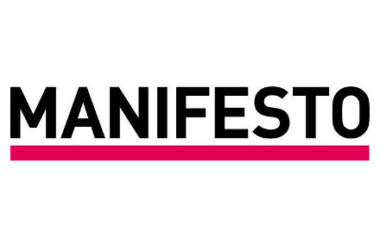You need to build an environment of creative trust with your staff if you want to innovate, says Mark Ellis from Manifesto.
Bringing new, innovative ideas to life in any organisation takes effort, collaboration and an ability to get the right people on board. Then there’s the small matter of having the new, exciting ideas in the first place. But it’s a road worth taking, as it can open doors to cultural change, new levels of supporter engagement and much more.
Test ideas with your supporters
Firstly, there are underlying challenges around bringing in any new innovation, mainly around cost, purpose and feasibility. Having a clear understanding of your audience and their needs is essential too – but you know this already, right?
When it comes to audiences, many charities have a unique advantage over commercial brands. Charities have a clear purpose and mission which leads to a loyal base of supporters who have a vested interest in the success of the cause.
This creates an environment for building, testing and iterating a new idea with an audience that actually cares. They will be the first to let you know whether or not you’re delivering value – a key measure of success.
Introducing levels of innovation can give charities completely different ways of communicating. This helps the loyal audience share the love they have for the charity in ways that can inspire others to take action.
Build creative trust
Fostering an environment of creative trust within an organisation’s staff really helps ideas and innovation to flourish. Creative trust is gained when people across the organisation feel they are able to contribute ideas and share new ways of thinking easily.
There are several ways to get started on the journey of creative trust – Lunch and Learns or Innovation Breakfasts are good ways to get the ball rolling.
Organising a hack day is also a great thing to do. Not only is it a useful way of bringing through new ideas, it gets teams collaborating around exciting and innovative thinking. Hacks involve cross-functional teams from across departments, and quite often specialists from outside the organisation too.
Having a clear organisational challenge to get your teeth into, with a goal for what teams need to achieve will help steer the session. Try bringing in external expertise for some fresh thinking. We’ve used a version of lightning talks and ‘How Might We’ note-taking before, to put context to the challenge and kick-start the ideas generation process (see https://designsprintkit.withgoogle.com for more information).
Let your core story be your compass
It’s also important to be able to recognise which ideas are the right ones to take forward. You’ll need a process to build, test and iterate. Using your organisation’s ‘core story’ – the reason you exist – is a vital filter in knowing whether you should pursue the idea.
The learnings and data from a new idea are an important part of the success of the project itself. Identify what you want to measure and how. These findings will help you iterate and scale.
In short, the people within your organisation are the creative powerhouse to bring about innovation. So trust them to do it.
Civil Society Media wishes to thank Manifesto for its support with this article
Mark Ellis is the creative director of Manifesto









